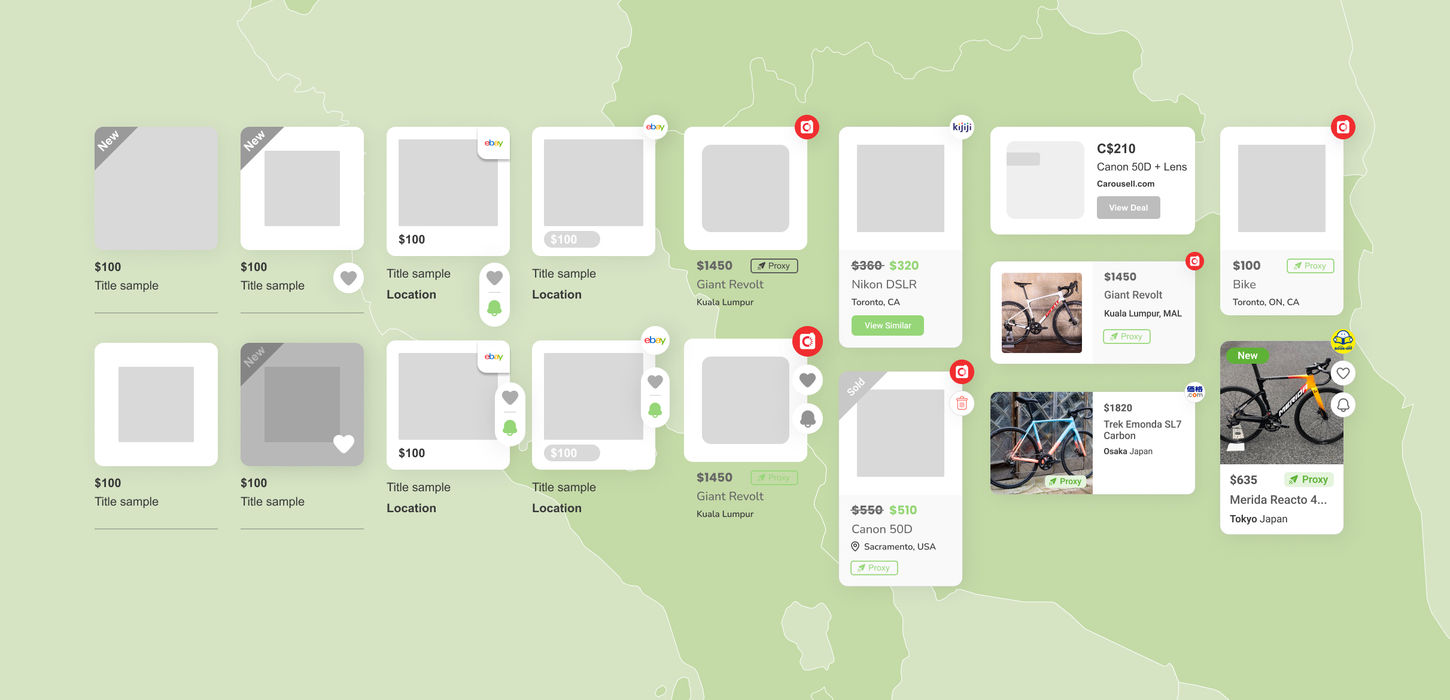
Agogo is a one-stop platform that attempts to transform second-hand shopping by consolidating listings from various sources, delivering users unparalleled convenience, time savings, and an extensive range of options globally.
WEB PLATFORM
AGOGO

Agogo emerges as the beacon of convenience, offering a streamlined platform to aid users from the complexity of various sources. It's not just about second-hand shopping; it's about transforming the experience into an effortless exploration of a global marketplace.
Objective
Problem
In the complex world of second-hand shopping, users encounter a time-consuming challenge as they navigate scattered listings across different sources, particularly for rare or discontinued items. This process can be daunting, let alone keeping track of new information, often leaving individuals unaware of the abundance of options in foreign marketplaces that could be conveniently shipped to their doorstep—an issue addressed by proxy forwarding services.







Challenge
Agogo emerges as the beacon of convenience, offering a streamlined platform to aid users from the complexity of various sources. It's not just about second-hand shopping; it's about transforming the experience into an effortless exploration of a global marketplace.
Research
The idea behind Agogo began with a personal tendency to seek secondhand searches from foreign marketplaces that virtually extend beyond its locality with the power of a proxy forwarding service. Realizing that using Google Translate and a forwarding service results in a world of new opportunities, a thought to optimize and aggregate persisted.
The research started with a clear outline of the value proposition for every party involved in developing Agogo, as well as their outlooks resulting from the platform. Followed by this was a competitive analysis and market research involving services with metasearch functions that aggregate data to its platform.

Strategizing
The strategy for Agogo involved a thorough PACT analysis that outlined how the platform could function in the best interest of the target demographic, and surveying people who are familiar with second-hand shopping across different modes to narrow down the practical priorities when prototyping the platform.
While the strategizing became quite ambitious, it was also important to consider the legal framework and practicality of this project as I intended to develop it past the prototyping stage into a working model for public use. To do so, I explored different resources that can be used to handle data aggregation, server usage, and possible legal workarounds.

User Flows & Mapping
Creating a clear site map, priority chart, and user flows greatly increased the efficiency of developing the prototype so as not to diverge on tangents. However, despite all the planning, it took longer than expected to improve the clarity and useability of seemingly simple components, such as the meta-search function, and price/search alerts.


Design
For Agogo, optimizing the metasearch, listing results, and filtering was a top priority, ensuring users could seamlessly transition from a search prompt to accurate and relevant results. This process involved numerous iterations of the visual system and language in the search bar, adjustments to filter hierarchies and experimentation with listings.
Achieving efficiency in the listings was particularly challenging, given their role as a comprehensive forefront of key metrics and data, including the listing image, source, shipping availability through proxy services, price, title, location, listing status, and options to favourite or receive price alerts.
Since the inception of Agogo, the goal has been to maintain a concise and compact visual system for listings similar to existing retail storefronts and marketplaces, but with the addition of a practical structure wrapping around the actual listing maximizing clarity. Icon sizing such as the proxy label will adjust automatically to accommodate different languages and currencies.
Furthermore, everything is designed to be hoverable/clickable, providing users with clarification or the option to explore the source listing.


Key Takeaways
It was only during the design process that I realized making the user experience seamless and streamlined was far more challenging than I had anticipated, for example.
An important discovery during the research revealed that while comprehensive information can benefit users, it can also confuse them depending on the cultural context. For example, features or functions common in one country can get lost in translation, therefore, selectively limiting information or developing options to clarify some culturally bound details can help in diversifying Agogo.

Prototype Walkthrough
And now, the moment you've been waiting for! Watch the video below for a firsthand look at Agogo or click the link to test the prototype.






